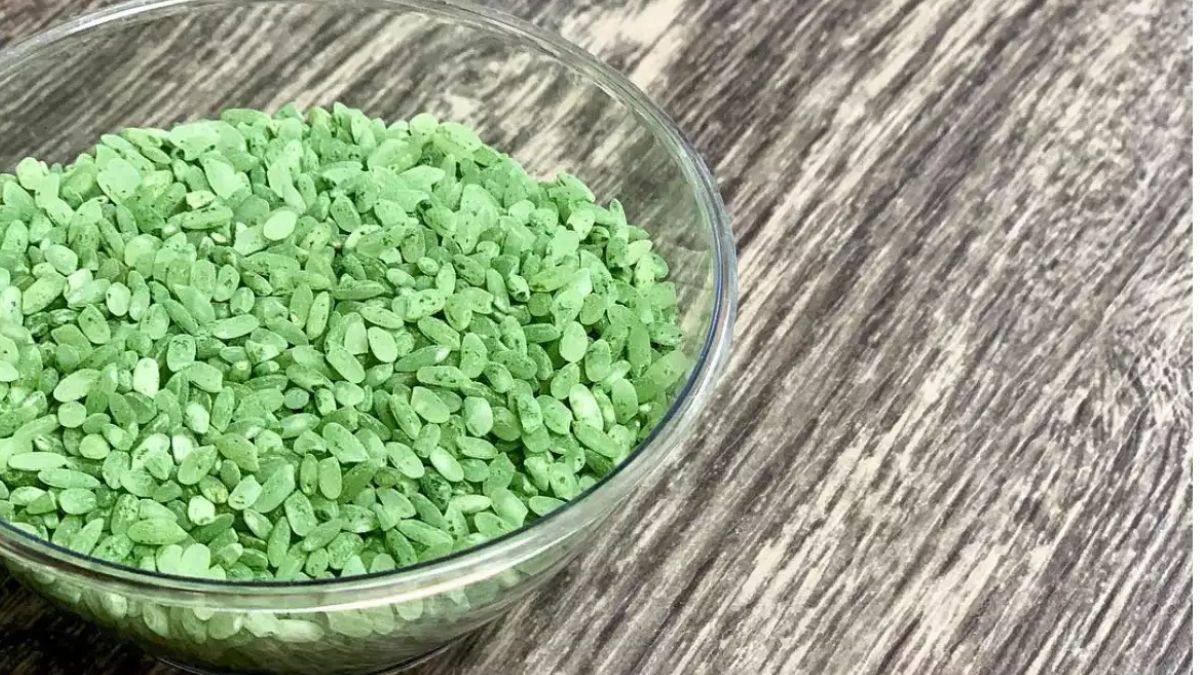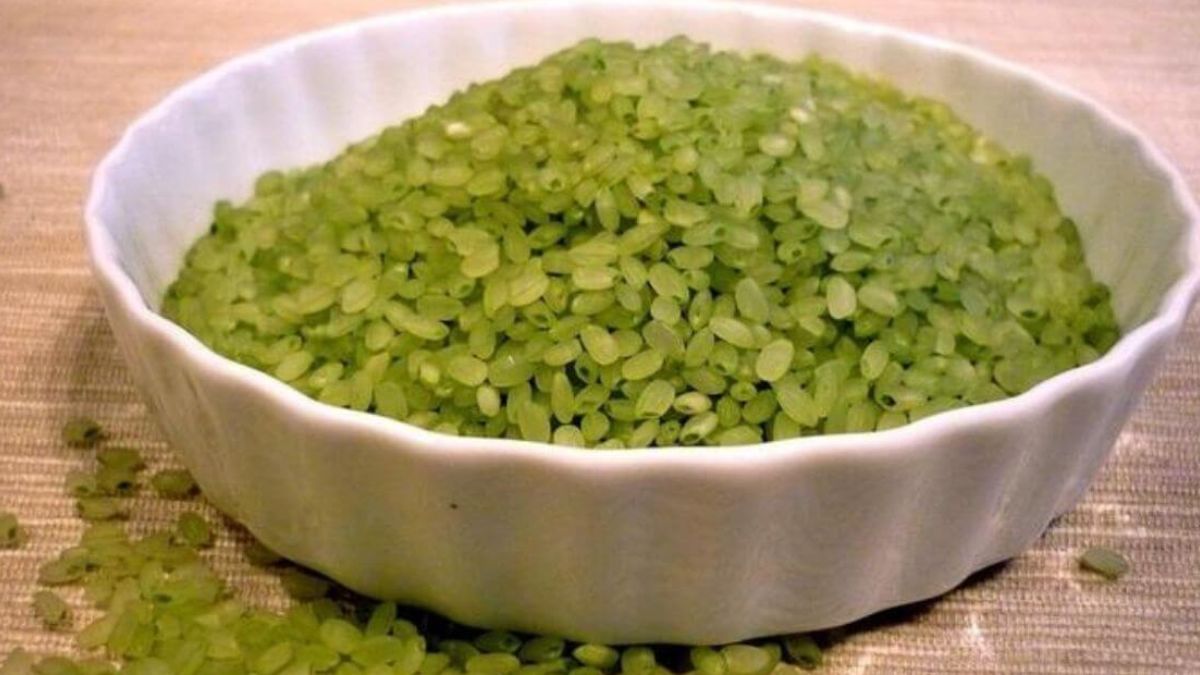Bamboo rice, like other rice, contains a variety of nutrients such as carbohydrates, fiber, and protein. Bamboo rice is thought to have a low glycemic index compared to other rice kinds, making it a healthier option for people with diabetes. The rice is low in fat or fat-free and high in vitamin B. Bamboo rice is a bowl of short-grained white rice that has been treated with the juice of young bamboo plants, and it is not a distinct rice cultivar. The bamboo chlorophyll is added to the rice milling process, and this technique increases the vitamin B content of the rice and gives it a flavor and scent similar to that of jasmine green tea.
Bamboo shoots have a sweet, earthy flavor, but they’re unique in that they keep their crisp texture even when cooked. Look for new shoots that don’t have any mushy or black areas and feel hefty for their size. To make them edible, they must be processed extensively.
How to Cook Bamboo Rice?
Drain the sticky rice after soaking it in water overnight. Each banana leaf should be rolled into a cigar-like shape and placed into each bamboo. Fill the bamboo with rice and close the open end with a banana leaf and string. Chargrill the bamboo rice for 10 minutes on medium heat, flipping it every few minutes.
Ingredients
Directions
- Bring water to a boil.
- Add rice and bring back to boiling.
- Stir, cover, and reduce heat to low.
- Simmer 12-15 minutes.
- Remove from heat and let stand, covered for 5-10 minutes.
- Fluff with a fork and serve.
https://youtu.be/NML8PD0yP6o
What is Bamboo Rice?
Bamboo rice is made from the remains of a dying bamboo shoot. A rare rice seed variation is bamboo rice blooms when bamboo branches die. Bamboo rice harvesting is considered a significant source of revenue for some ethnic tribes. Bamboo rice is a short-grain rice type with strong aromatic smells and fragrances because it is infused with pure bamboo juice. It’s a pale green color with a herbal flavor and adds more color to the dish than regular white or brown rice could.
Bamboo rice has a sticky feel, making it particularly well-suited to various cuisines, mainly when used to make a fantastic risotto or an excellent sushi roll basis. It’s gluten-free, and the cooked texture is light and delicate.
Why is Bamboo Rice Green?
This short-grained rice is infused with bamboo extract, high in chlorophyll. Chlorophyll is a naturally occurring chemical that allows the bamboo – and other plants – to manufacture energy and sugars through photosynthesis before being harvested. This chlorophyll is responsible for the green color of bamboo rice, just as chlorophyll is responsible for the green color of plants.
How is Bamboo Rice Different from Other Types of Rice?
Bamboo rice differs from other rice cultivars in some ways. Of course, the most noticeable difference is its color and scent, generated from the rice’s chlorophyll. On the other hand, bamboo rice has a distinct flavor that can give a new depth of flavor to recipes compared to conventional white rice.
Bamboo rice has a wheat-like flavor and resembles paddy rice in appearance. When cooked identically to regular rice, bamboo rice has a somewhat sweet flavor that makes it a fantastic side or main meal.
The texture of the meat when cooked is the other significant difference. When cooked properly, it is sticky and wet, yet when eaten, it has a somewhat more substantial and chewy texture than other types of rice. As a result of its distinct flavor, texture, color, and perfume, bamboo rice is used in many cultures for special occasions.
What are the Health Benefits of Bamboo Rice?
Have you heard that bamboo rice has a lot of health benefits? Although few people realize it, bamboo rice has some health benefits. Actual bamboo rice, not the paddy rice laced with bamboo juice.
Bamboo seeds are nutrient-dense. Bamboo rice is high in vitamins B1, A, B3, B6, and B2 and protein. Phosphorus, calcium, iron, and fiber are all abundant in this food. As a result, bamboo rice is highly healthy, particularly for tiny children, as it provides instant energy.
Enhances Fertility
Bamboo rice has been extensively researched in some cultures, and studies have indicated that eating it can help women boost their reproductive fertility.
Controls Join and Rheumatic Pain
Because bamboo rice contains calcium, it helps to regulate and relieve pain associated with arthritis, rheumatism, and other musculoskeletal conditions.
Helps Control Diabetes
Because bamboo rice has a low Glycemic index, diabetes is better controlled. It’s high in iron and phosphorus, making it suitable for the heart and lowering the risk of heart disease.
Lowers Cholesterol
Bamboo seeds are devoid of fat. Carbs in the diet can gently raise blood glucose levels, reducing cholesterol buildup. Because of the low Glycemic index, it is easy to burn fat accumulated.
High Content of Phosphorus
Bamboo seeds contain approximately mg of phosphorus, vital for forming teeth and bones. It can influence how the body utilizes fats and carbohydrates. Phosphorus can assist the body in accumulating more protein for organ and tissue repair. Because it helps with kidney function, neuron signaling, and heart rate when combined with vitamin B.
Blood Pressure is Regulated
Bamboo rice can help keep your blood pressure in check if you eat it regularly, and it accomplishes this by preserving mineral components in the body. Phosphorus, calcium, and iron all work together in your body to keep your brain and heart in sync.
What is a Bamboo Steamer?
Bamboo steamers are made out of interlocking baskets that stack on top of one another and are topped with a lid. The entire device is set over a wok or pot of simmering water, and steam rises through the open ridges at the bottom of each basket, cooking whatever’s within.
A bamboo steamer may appear unnecessary; it appears to be one of those culinary items that you don’t need. However, you may find yourself using it more frequently than you anticipated. Steaming is as standard and significant a cooking procedure in Asian cuisine as baking or roasting is in American or European cuisine. You can steam not only buns and dumplings with a bamboo steamer but also bread, vegetables, rice, proteins, cakes, and other delicacies.
Steaming is not just a terrific way to cook food, but it’s also a great way to reheat it, as we discussed in our piece about how to steam food in general. Steaming can be a terrific technique to make your food fresh again because it reintroduces moisture. Bamboo steamers are also fantastic because the lids do not gather condensation (which would drip onto the food in the steamer basket and alter its texture, taste, or appearance).
Conclusion
Bamboo rice can also be used as a base for an Asian-style risotto or as a side dish when the chef wishes to add a splash of color to a dish. The rice is frequently moist and sticky after it has been cooked. This kind is available in several Asian markets and through mail-order food catalogs and specialty food stores. Bamboo rice is a beautiful pale green that isn’t precisely sushi rice, although it is occasionally used in sushi rolls to add color. It should not be cooked in the same manner as ordinary sushi rice. Add 1.5 cups (0.35 L) of water to every 8 ounces (227 g) of rice to cook it. After that, prepare it as usual, but set it aside for 20 minutes.
Bamboo rice, like other rice, contains a variety of nutrients such as carbohydrates, fiber, and protein. Bamboo rice is thought to have a low glycemic index compared to other rice kinds, making it a healthier option for people with diabetes. The rice is low in fat or fat-free and high in vitamin B. Because of the high calcium and phosphorus content, the tribes of Kerala utilize this rice to treat joint discomfort. Rice harvesting is difficult due to the bamboo’s erratic flowering and thorniness. To get flawlessly polished bamboo rice, clean the region around each bamboo’s base and remove any collected dirt. After that, the base is leveled with a clay slurry and let dry. The bamboo rice is then stored on the prepared surface and gathered to be consumed once it has dried.

